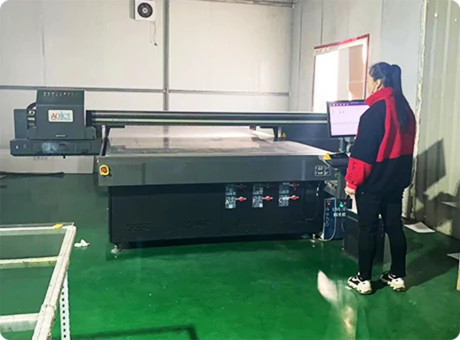Understanding Different Types of Tempered Glass Properties, Applications, and Benefits
Tempered glass, also known as toughened glass, is a type of safety glass processed by controlled thermal treatments to increase its strength compared to standard glass. The tempering process involves heating the glass to high temperatures, typically between 600 to 700 degrees Celsius, and then cooling it rapidly. This method enhances the glass's mechanical properties and thermal resistance, making it suitable for various applications. In this article, we will explore the different types of tempered glass, their unique properties, applications, and the benefits they offer.
Types of Tempered Glass
1. Standard Tempered Glass This is the most common type of tempered glass used in construction and architecture. It is created using a uniform heating and cooling method, which provides consistent strength. Standard tempered glass is often used in windows, doors, and partitions due to its durability and resistance to thermal stress.
2. Laminated Tempered Glass This type of glass combines the strength of tempered glass with the safety features of laminated glass. It consists of two or more layers of tempered glass interlayered with a polymer sheet. This combination ensures that even if the glass breaks, the shards remain bonded to the interlayer, preventing them from causing injury. Laminated tempered glass is widely used in skylights, glass facades, and safety-critical applications like automotive windshields.
3. Heat Soaked Tempered Glass This variant undergoes an additional heat soaking process to minimize the risk of spontaneous breakage caused by nickel sulfide inclusions, which can occur in standard tempered glass. During heat soaking, the glass is held at high temperatures for an extended period, allowing any weak points to fail before installation. This type is particularly suitable for applications exposed to extreme conditions, such as high-rise buildings or glass canopies.
4. Low-iron Tempered Glass Traditional glass has a greenish tint caused by iron impurities. Low-iron tempered glass, however, contains less iron content, resulting in a clearer and more aesthetically pleasing appearance. Its high clarity makes it ideal for applications where visibility is crucial, such as in display cabinets, facades, and shower enclosures.
different tempered glass
5. Reflective and Tinted Tempered Glass To enhance energy efficiency and aesthetic appeal, tempered glass can be manufactured with reflective or tinted coatings. Reflective tempered glass helps reduce solar heat gain and glare, making it preferred for commercial buildings and high-rise structures. Tinted tempered glass, available in various shades, can also provide privacy while reducing the amount of UV radiation entering indoor spaces.
Properties and Benefits
Tempered glass is renowned for its superior strength and safety. It is approximately four to five times stronger than normal glass of the same thickness. Additionally, in the event of breakage, tempered glass shatters into small, blunt pieces, minimizing the risk of injury. Its resistance to thermal stress allows it to withstand temperature fluctuations, making it an ideal choice for environments with extreme heat or cold.
Moreover, tempered glass is often more cost-effective in the long run due to its durability and lower maintenance requirements. Its aesthetic versatility allows architects and designers to create striking designs while ensuring safety and functionality. The use of different types of tempered glass can enhance energy efficiency in buildings, contributing to a more sustainable environment.
Applications of Tempered Glass
The applications of tempered glass are diverse and expansive. In residential settings, it is commonly used in shower doors, glass railings, and patio doors. In commercial buildings, it is found in facades, storefronts, and interior partitions. Its application extends to the automotive industry, where it is used for side and rear windows, as well as in appliances like ovens and fireplaces.
In conclusion, tempered glass is a remarkable material that balances strength, safety, and aesthetic appeal. With various types available to meet specific needs, the use of tempered glass has become a standard in construction, automotive, and various other industries. Whether it’s improving the safety of a home, creating a sleek commercial space, or ensuring a better user experience in vehicles, tempered glass plays a crucial role in modern architecture and design.
 Afrikaans
Afrikaans  Albanian
Albanian  Amharic
Amharic  Arabic
Arabic  Armenian
Armenian  Azerbaijani
Azerbaijani  Basque
Basque  Belarusian
Belarusian  Bengali
Bengali  Bosnian
Bosnian  Bulgarian
Bulgarian  Catalan
Catalan  Cebuano
Cebuano  Corsican
Corsican  Croatian
Croatian  Czech
Czech  Danish
Danish  Dutch
Dutch  English
English  Esperanto
Esperanto  Estonian
Estonian  Finnish
Finnish  French
French  Frisian
Frisian  Galician
Galician  Georgian
Georgian  German
German  Greek
Greek  Gujarati
Gujarati  Haitian Creole
Haitian Creole  hausa
hausa  hawaiian
hawaiian  Hebrew
Hebrew  Hindi
Hindi  Miao
Miao  Hungarian
Hungarian  Icelandic
Icelandic  igbo
igbo  Indonesian
Indonesian  irish
irish  Italian
Italian  Japanese
Japanese  Javanese
Javanese  Kannada
Kannada  kazakh
kazakh  Khmer
Khmer  Rwandese
Rwandese  Korean
Korean  Kurdish
Kurdish  Kyrgyz
Kyrgyz  Lao
Lao  Latin
Latin  Latvian
Latvian  Lithuanian
Lithuanian  Luxembourgish
Luxembourgish  Macedonian
Macedonian  Malgashi
Malgashi  Malay
Malay  Malayalam
Malayalam  Maltese
Maltese  Maori
Maori  Marathi
Marathi  Mongolian
Mongolian  Myanmar
Myanmar  Nepali
Nepali  Norwegian
Norwegian  Norwegian
Norwegian  Occitan
Occitan  Pashto
Pashto  Persian
Persian  Polish
Polish  Portuguese
Portuguese  Punjabi
Punjabi  Romanian
Romanian  Russian
Russian  Samoan
Samoan  Scottish Gaelic
Scottish Gaelic  Serbian
Serbian  Sesotho
Sesotho  Shona
Shona  Sindhi
Sindhi  Sinhala
Sinhala  Slovak
Slovak  Slovenian
Slovenian  Somali
Somali  Spanish
Spanish  Sundanese
Sundanese  Swahili
Swahili  Swedish
Swedish  Tagalog
Tagalog  Tajik
Tajik  Tamil
Tamil  Tatar
Tatar  Telugu
Telugu  Thai
Thai  Turkish
Turkish  Turkmen
Turkmen  Ukrainian
Ukrainian  Urdu
Urdu  Uighur
Uighur  Uzbek
Uzbek  Vietnamese
Vietnamese  Welsh
Welsh  Bantu
Bantu  Yiddish
Yiddish  Yoruba
Yoruba  Zulu
Zulu 

